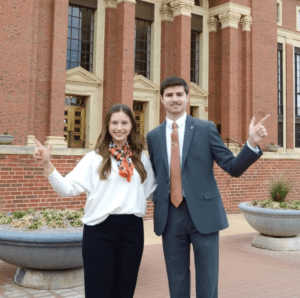Editor’s note: The original article was published by Jessica Hart. https://www.kare11.com/article/news/local/u-of-m-fraternity-bone-marrow-stem-cell-donors/89-90d43a78-9700-4566-b37c-d6dc6464d6a1
MINNEAPOLIS — University of Minnesota fraternity Sigma Alpha Epsilon (SAE) is working to sign up hundreds of college students to become bone marrow and stem cell donors.
The frat has been partnering with NMDP, a global nonprofit leader in cell therapy. For years it has helped register around 1,000 students.
“A big thing for us is just trying to show people fraternities aren’t just like partying and drinking and stuff like that like we actually like to give back to the community,” said Axel Arnold.
The 20-year-old joined the registry last fall through his fraternity. In the spring, he learned he was a match for a 54-year-old man and decided to donate his stem cells.
“I didn’t really think it was like too heroic or anything,” Arnold said. “If I was in that same position, I’d want somebody to do the same thing for me.”
His experience compelled him to organize the special drive at his fraternity Wednesday night. In a few hours, they registered 75 people.
“These student groups really want to make a difference. They care about their culture, they care about their society,” said Keesha Mason with NMDP, formerly Be The Match.
Mason said it’s important to get young people connected with their mission, so they’ll want to become donors. Her words inspired Arnold to sign up last fall.
“Most people think young men are disconnected but on health stance young 18–35-year-olds their stem cells, I don’t want to say are fresher, but their stem cells when they’re put into a patient that needs a match gives those patients better outcomes,” she said.
Studies of stem cell transplants have shown young donors, between the ages of 18 and 30-year-olds lead to the highest survival rates. Young men are ideal donors because they can donate a larger volume of cells, leading to higher survival rates.
Currently the stem cell registry includes about 9 million people, but the percentage of 18-24-year-olds is low.
It’s why NMDP is working to change that, meeting young people where they are at. Laney Bay was walking home when she saw NMDP in Sigma Alpha Epsilon’s front yard.
“I’ve had a lot of friends who have struggled through different medical issues in the past and it’s very interesting to me, and I want to make sure I can do what I can,” she said.
Arnold is hopeful more young people will sign up to become donors and said he would donate again if he got the call.
“It was pretty quick. I would say like actual effort I had to put into it was like probably about a half day of work towards doing it and I mean a half a day of work for a life is insurmountable,” Arnold said.

















